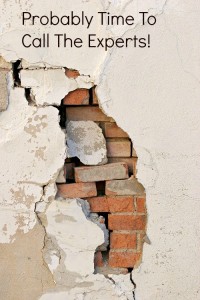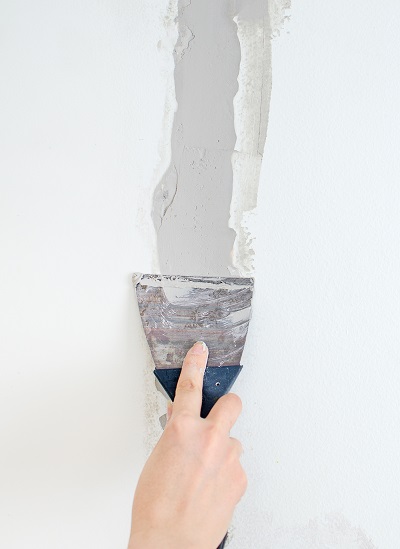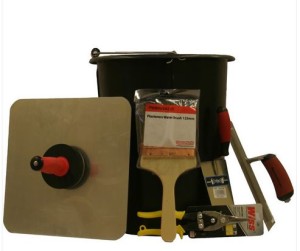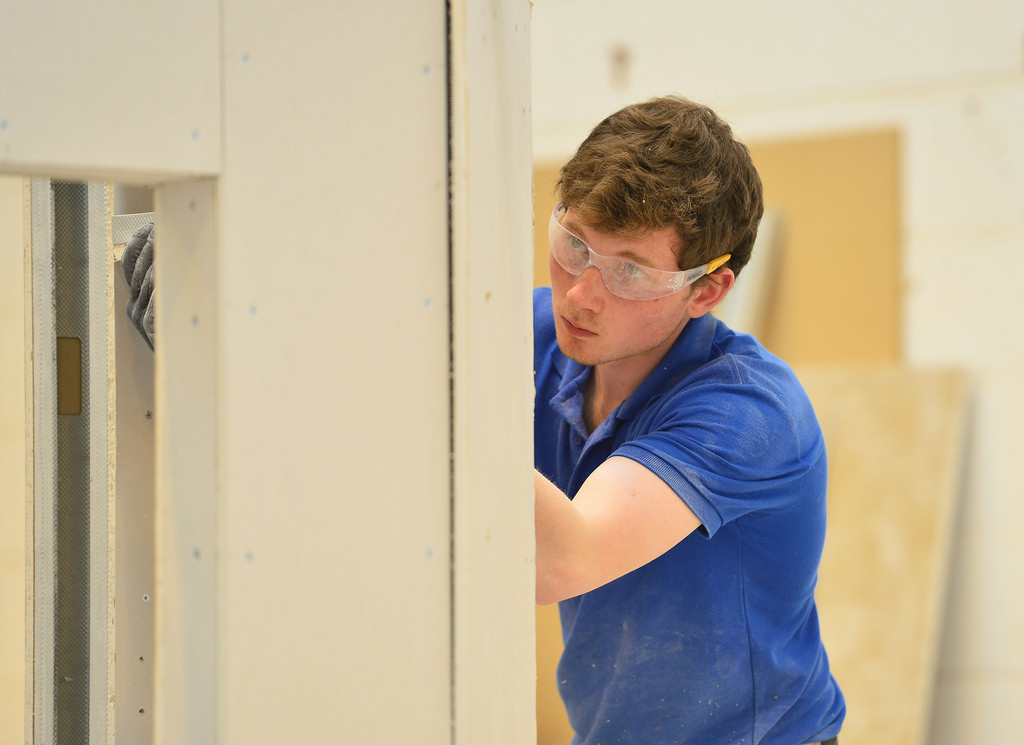As industry specialists, we always try to help make your plastering life easier in any way we can. That’s why we’ve put together 50 plastering tips to help you out!
If you’re new to plastering, it can be quite a scary concept to begin with! However, with the right plastering tools, techniques and confidence, there’s no reason why you shouldn’t get the results you desire from the start.
Click here to see our plastering tools and equipment – we stock everything you need!
So, have a read below and let us know what you think – and as always, get in touch with our team if you need further assistance.
Our Top Tips!
Here are a few pointers to help you along.
1. Plaster won’t stick to just any surface and you don’t want it to start falling away, so ensure your surface is ready to be plastered.
2. Make sure it is clean – remove bits of existing plaster, dust or wallpaper.
3. Check the suction of your wall.
4. High suction porous backgrounds can suck the moisture from the plaster meaning it dries too quick – so you may need to wet the wall before you start.
5. When wetting your walls use a fine mist spray gun to avoid having to keep reaching down to re-wet your brush.
6. Once the water starts running down the wall, you know you’ve controlled the suction.
7. Low suction backgrounds, such as painted surfaces will also need to be properly prepared.
8. While plasterboard or backing coat can be skimmed over without preparation – existing plaster or previously painted surfaces will need treating with a bonding agent, such as a mix of PVA glue and water to ensure the plaster sticks to the wall.
9. You could also try adding a handful of sand to the PVA mixture to give it a rougher texture and better adhesion.
10. Clean as you go along – it may sound over the top but it’s vital to have clean buckets, tools and equipment to ensure your plaster doesn’t go off and you get a better finish that lasts.
11. Also, dry plaster is a nightmare to remove from your tools and can cause drags in the plaster finish on your next job!
12. Always use clean water, again to avoid contaminating your plaster and make it go off or set too quick.
13. Always mix plaster by adding plaster to the water and not the other way around.
14. Add just enough plaster first to make a heap on the top of the water and mix it so that it’s lump free, then slowly add the plaster to get the correct consistency either with a wooden stick or mixer drill.
15. Plaster and water mix together roughly half and half – so half a (clean) bucket of water should make a full bucket of plaster.
Click here to see our plastering tools and equipment – we stock everything you need!
16. The plaster should be the consistency of melted ice cream – try standing a stick in it – if it can stand up, the plaster is mixed right.
17. Plaster must be applied when a surface feels tacky, but not too wet, to help it bond to the surface well.
18. When plastering a room, try not to do two walls that are touching each other as you risk damaging one wall while plastering the other.
19. Keep it cool in the room you are plastering – radiators should be turned off or the plaster will dry out too quickly, making it difficult to apply and crack.
20. Beginners should start on a small area first to ensure they’re getting the technique right.
21. Start with an area which only takes 30 mins or less for the first coat.
22. Ensure you follow the six stages of plastering correctly and confidently – from the first coat to the final finish.
23. A good plaster finish can be achieved with a combination of confident firm pressure and the correct angle of your trowel.
24. Don’t try and get your surface perfect in the first coat – it takes too much time and the plaster may dry too soon – imperfections can be ironed out in later stages.
25. When you first apply your trowel to the ceiling or wall, start with one edge of the trowel angled away from it.
26. As the plaster on your trowel gets less and less with your movement, the angle between your trowel and the surface gets smaller.
27. Watch for spillage when reducing the angle of your trowel!
28. If you’re doing a ceiling, don’t stand directly under your trowel, just in case you get plaster in your eye!
29. Artex ceilings can be plastered by just using a thicker coat of plaster.
30. Don’t go into the edges between the ceiling and wall straight away with your plaster – it can be worked into the edges at a later date and avoid lumps of plaster clumping in the corners.
Click here to see our plastering tools and equipment – we stock everything you need!
31. But, when you do do your corners, make sure they’re flat – it makes the whole wall look good!
32. Ensure the thickness of the plaster is even on the first and second coat. Use firm pressure to ensure it is flat with no bulges.
33. You don’t need to worry too much about smoothness or trowel marks at this stage, just that it’s flat and even.
34. Make sure the first thin coat is wet and pliable when you apply the second coat.
35. Don’t worry about filling every little hole at this stage – it’s better to avoid your plaster firming up too quick.
36. After the first two coats, the ‘trowelling up’ process begins. This is time to fill all those holes, remove your trowel marks and get it smooth.
37. Make sure before you start the plaster is tacky – pliable enough to push the plaster into the holes, but not so wet you make new holes.
38. As the plaster sets it will darken in colour, which means it’s time for the final trowel.
39. Don’t over polish the plaster on the final dry trowel stage – it should be even and slightly polished, but feel like eggshell – any smoother, it makes paint and wallpaper a nightmare to stick to.
40. Ensure you have the right plastering tools, equipment and know how before you start, so you don’t end up having to stop half way through.
41. Make sure you know you can comfortably get to hard to reach areas with stilts or scaffolding.
42. Love your trowel – it’s a vital piece of plastering kit. Make sure it’s clean, rust free and the correct type. Just any trowel will make the job harder.
43. For beginners, a good size to start with is 11 inches. While a larger trowels covers areas faster, it’s harder to control.
44. Wear your metal trowel in – it’s much easier to use this way – some can be bought pre worn.
45. Use tin snips to cut angle bead to make the job easier.
Click here to see our plastering tools and equipment – we stock everything you need!
46. Don’t sand down plaster – if you follow the six stages correctly there’s no reason why you would need to come back to sand it, causing more mess, imperfections and more hard work.
47. Remember! Flatten, Amend Holes, Smooth Trowel Marks
48. Always remember to keep your trowel flat on the wall.
49. Don’t forget to fill any holes in the plaster by applying firm pressure or getting more plaster in the hole and smoothing out.
50. Then when the plaster is quite firm, any trowel marks and ridges will be successfully smoothed out – providing you have kept it flat allowing your trowel to sit flat on the wall.
Order online today!
We believe plastering tools don’t have to break the bank. However, they must be good quality! Thankfully, we have a huge range in stock, from high quality budget buys to professional plastering tools.
If you do find yourself in need of a piece of equipment while you’re on a job, we offer a fast ordering service, free delivery on orders over £99 and next day delivery. If you have any questions at all, give a member of our team a call – they’re always on hand to offer help and advice.







